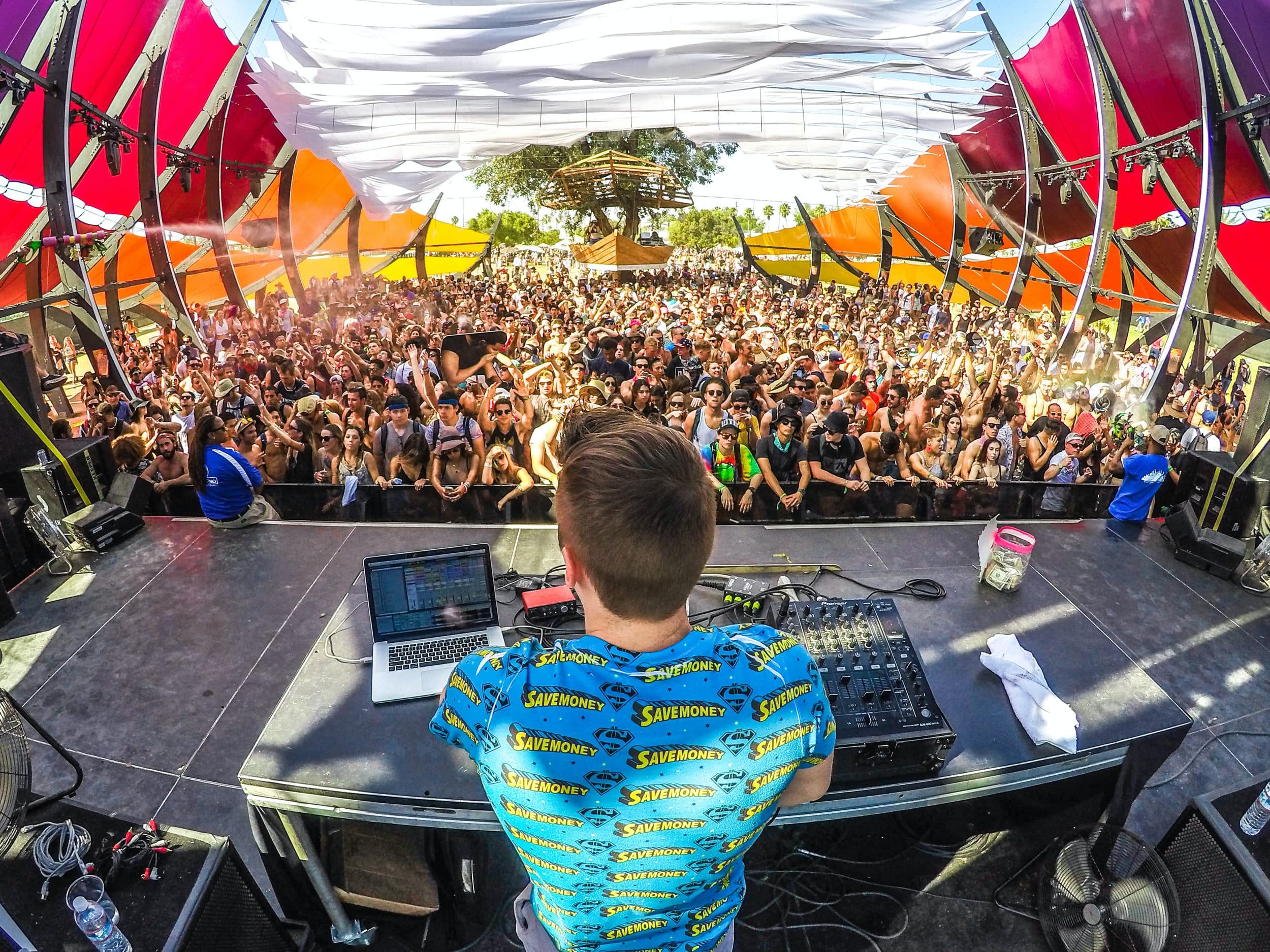5 Ways to Use AI in Music Production Today

While AI is making major moves in industries like marketing and design, the music industry has yet to realize the same level of adoption. Until just recently, AI music tools just weren’t quite as useful as the text or image generators, and were mostly used for gimmicks and click bait. However, things are changing and music-based AI has made significant advancements quickly, on the verge of changing the industry forever. Music producers from small indie DJs all the way to the biggest names in the game have begun incorporating AI tools into their workflow and the results are honestly kind of mind blowing.
Generating Melodies and Lyrics
One of the most popular applications of AI in music production is generating melodies and lyrics. AI tools can analyze existing songs and create new melodies and lyrics that sound like they were created by a human. These tools can speed up the songwriting process, generate new ideas, and experiment with different styles and genres. They often have various inputs and controls that producers can use to adjust the output to their liking, fully customizing the sound to their style.
One example of an AI tool used to generate melodies is Amper Music. Amper Music allows users to create custom tracks by selecting a genre, mood, and instruments. The AI then generates a unique melody, chord progression, and arrangement based on the user's selections. Amper Music has been used by artists like Taryn Southern and Steve Aoki to create original tracks. Another AI tool used to generate lyrics is AIVA (Artificial Intelligence Virtual Artist). AIVA uses algorithms to analyze existing music and create new songs with lyrics. The tool has been used to create original scores for films and commercials.
Generating A Singer’s Voice
Another way that AI is being used in music production is by generating a singer's voice. This technology can analyze the vocal characteristics of a particular artist and recreate their voice digitally. This allows producers to work with virtual versions of popular singers, potentially saving time and money that would otherwise be spent on hiring a vocalist. AI-generated voices can also be manipulated and customized, allowing producers to experiment with different vocal styles and effects. While there is still some debate over whether AI-generated vocals can fully replace human vocals, the technology is advancing rapidly and could soon become a viable option for many producers.
One example of an AI tool that generates a singer's voice is Vocaloid. Developed by Yamaha, Vocaloid uses a database of recorded human speech to synthesize singing. Producers can input lyrics and a melody, and Vocaloid will generate a vocal track that sounds like it was sung by a human. Vocaloid has been used in a variety of ways, from creating virtual pop stars to providing background vocals for songs. While Vocaloid has faced some criticism for its robotic sound, newer versions of the software are said to be more advanced and realistic.
Enhancing Mixing and Mastering
AI can assist in mixing and mastering processes by analyzing audio files and suggesting adjustments to levels, equalization, and effects. This technology can also be used to automate certain tasks, allowing producers to work more efficiently and effectively. One example of an AI tool that enhances mixing and mastering is iZotope's Neutron 4. Neutron 4 uses machine learning algorithms to analyze audio and offer suggestions for EQ, compression, and other effects. The tool can also automatically detect different instruments and adjust levels accordingly. Producers can use Neutron 4 to speed up their workflow and improve the overall quality of their mixes.
Another example of an AI-based mixing and mastering tool is LANDR. LANDR uses AI algorithms to master tracks, applying EQ, compression, and other effects to achieve a polished, professional sound. The tool can analyze the track and adjust settings based on the genre and other factors. LANDR can also be used to automate certain tasks, allowing producers to focus on other aspects of music production. While some producers have criticized the use of AI in mastering, arguing that it can lead to a generic, one-size-fits-all sound, others have praised the technology for its convenience and effectiveness.
Creating Virtual Instruments
AI technology can be used to create virtual instruments that sound incredibly realistic. By analyzing the sound characteristics of real instruments, AI can create digital versions that capture the nuances and subtleties of the original sound. This technology can also be used to create hybrid instruments, combining elements of multiple instruments to create something entirely new. Virtual instruments created with AI can be used in a variety of ways, from adding subtle texture to a track to creating an entirely new sound that pushes the boundaries of what is possible with traditional instruments.
One example of an AI tool that creates virtual instruments is called Hexachords Orb Composer. Orb Composer uses AI to generate musical ideas and create unique compositions. The tool can also be used to create custom virtual instruments by combining different samples and sounds. By using Orb Composer to create virtual instruments, producers can create unique sounds that are tailored to their specific needs, allowing them to stand out in a crowded music industry.
Creating Interactive Music Experiences
Creating interactive music experiences is another way that AI is being used in music production. Interactive music experiences allow users to interact with music in real-time, creating a unique and personalized listening experience. AI can be used to create music that responds to user input, such as movement or voice commands. This technology can also be used to create music that changes in response to the user's mood or emotions, creating a truly immersive experience.
An example of an AI-based interactive music experience is Google AI Duet. The Google AI Duet is an interactive web-based tool that allows users to play a duet with an AI-powered piano. The AI responds to the user's input in real-time, creating a unique and dynamic listening experience. The Google AI Duet has been praised for its ability to create a seamless and intuitive experience, blurring the line between human and machine-generated music. As AI technology continues to evolve, we can expect even more exciting developments in the realm of interactive music experiences.
Conclusion
Unsurprisingly, AI is transforming the way music is being produced, providing new opportunities for musicians and producers to create and experiment with different sounds. From generating melodies and lyrics to creating interactive music experiences, AI is only getting and doesn’t seem to be slowing down. It’s only a matter of time before AI is a core part of every musicians workflow.

